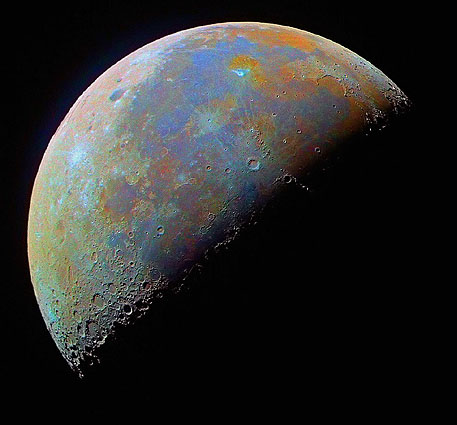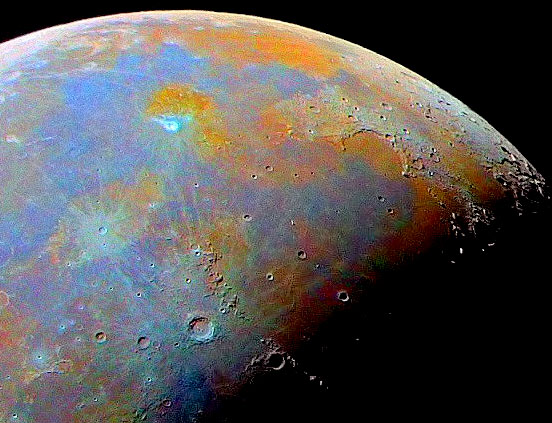Difference between revisions of "December 20, 2004"
| (6 intermediate revisions by the same user not shown) | |||
| Line 1: | Line 1: | ||
__NOTOC__ | __NOTOC__ | ||
=Bi-Colored Moon= | =Bi-Colored Moon= | ||
| + | <!-- Start of content --> | ||
<table width="85%" border="0" align="center" cellpadding="6" cellspacing="2"> | <table width="85%" border="0" align="center" cellpadding="6" cellspacing="2"> | ||
<tr> | <tr> | ||
| Line 13: | Line 14: | ||
</table> | </table> | ||
<table width="80%" border="0" align="center" cellpadding="8"> | <table width="80%" border="0" align="center" cellpadding="8"> | ||
| − | <tr><td><div align="center" class="main_sm"> | + | <tr><td><div align="center" class="main_sm"> |
| + | Image Credit: [mailto:filipe@pixmix.tv Filipe Aves] | ||
</div></td> | </div></td> | ||
</tr> | </tr> | ||
| − | </table> | + | </table> |
<br> | <br> | ||
<table class="story" border="0" bgcolor="#FFFFFF" width="90%" cellpadding="10" align="center"><tr><td> | <table class="story" border="0" bgcolor="#FFFFFF" width="90%" cellpadding="10" align="center"><tr><td> | ||
<p align="center"><b>Bi-Colored Moon</b></p> | <p align="center"><b>Bi-Colored Moon</b></p> | ||
| − | <p align="left"> [[March_7,_2004|Early]] this year, Portuguese imager Filipe Aves demonstrated that a normal digital camera can capture the subtle colors of the lunar surface and that relatively simple processing can enhance them. Filipe's latest image reflects his continuing refinement of the technique, including stacking images to reduce noise and increase color saturation. In this image the Moon is largely two colors - blues and oranges. But look closely for this bi-coloration isn't just the mare-highlands compositional dichotomy. Within Mare Imbrium and nearby Oceanus Procellarum (see mouseover) both these colors appear. The blues are generally younger basalts that are titanium rich, and the oranges are older, Ti-poor lavas. Lighter-hued golds also appear in the highlands but these are not basalts. The Galileo color composite [[May_10,_2004|image]] - made with a billion dollar spacecraft and separate filtered images - distinguishes the highlands from the Ti-poor basalts. Other amateurs should explore this technique - Felipe's [http://www.colormoon.pt.to/ web site] shows you how - using high resolution images to investigate the details of lava flows and topography. For example - do domes or sinuous rilles occur preferentially in lavas of certain colors/compositions?</p> | + | <p align="left"> [[March_7,_2004|Early]] this year, Portuguese imager Filipe Aves demonstrated that a normal digital camera can capture the subtle colors of the lunar surface and that relatively simple processing can enhance them. Filipe's latest image reflects his continuing refinement of the technique, including stacking images to reduce noise and increase color saturation. In this image the Moon is largely two colors - blues and oranges. But look closely for this bi-coloration isn't just the mare-highlands compositional dichotomy. Within Mare Imbrium and nearby Oceanus Procellarum (see mouseover) both these colors appear. The blues are generally younger basalts that are titanium rich, and the oranges are older, Ti-poor lavas. Lighter-hued golds also appear in the highlands but these are not basalts. The Galileo color composite [[May_10,_2004|image]] - made with a billion dollar spacecraft and separate filtered images - distinguishes the highlands from the Ti-poor basalts. Other amateurs should explore this technique - Felipe's [http://www.colormoon.pt.to/ web site] shows you how - using high resolution images to investigate the details of lava flows and topography. For example - do domes or sinuous rilles occur preferentially in lavas of certain colors/compositions? |
| + | </p> | ||
<blockquote> | <blockquote> | ||
<p align="right">— [mailto:tychocrater@yahoo.com Chuck Wood]</p></blockquote> | <p align="right">— [mailto:tychocrater@yahoo.com Chuck Wood]</p></blockquote> | ||
<p align="left"><b>Technical Details:</b><br> | <p align="left"><b>Technical Details:</b><br> | ||
| − | This image is the result of a composite of several moon images taken on 4 December 2004. I used 15 raw images taken with a Canon 300D mounted at the prime focus of a 10" Newtonian. I used Photoshop to enhance the saturation levels of a group of stacked images at 16-bit per channel/pixel. </p> | + | This image is the result of a composite of several moon images taken on 4 December 2004. I used 15 raw images taken with a Canon 300D mounted at the prime focus of a 10" Newtonian. I used Photoshop to enhance the saturation levels of a group of stacked images at 16-bit per channel/pixel. |
| + | </p> | ||
<p><b>Related Links:</b><br> | <p><b>Related Links:</b><br> | ||
| − | [http://www.colormoon.pt.to/ How to capture the color of the Moon]</p> | + | [http://www.colormoon.pt.to/ How to capture the color of the Moon] |
| + | </p> | ||
<p><b>Yesterday's LPOD:</b> [[December 19, 2004|Half Moon in Broward]] </p> | <p><b>Yesterday's LPOD:</b> [[December 19, 2004|Half Moon in Broward]] </p> | ||
<p><b>Tomorrow's LPOD:</b> [[December 21, 2004|Full Moon and High Res]] </p> | <p><b>Tomorrow's LPOD:</b> [[December 21, 2004|Full Moon and High Res]] </p> | ||
| − | </ | + | </td> |
</tr> | </tr> | ||
</table> | </table> | ||
| Line 40: | Line 45: | ||
<p align="center" class="main_titles"><b>Author & Editor:</b><br> | <p align="center" class="main_titles"><b>Author & Editor:</b><br> | ||
[mailto:tychocrater@yahoo.com Charles A. Wood]</p> | [mailto:tychocrater@yahoo.com Charles A. Wood]</p> | ||
| − | < | + | <!-- Cleanup of credits --> |
| − | + | <!-- Cleanup of credits --> | |
| − | < | + | <!-- Cleanup of credits --> |
| − | + | <!-- Cleanup of credits --> | |
| − | + | <!-- Cleanup of credits --> | |
| − | < | + | <!-- Cleanup of credits --> |
| − | < | + | <!-- Cleanup of credits --> |
| − | + | <!-- Cleanup of credits --> | |
| − | < | + | <!-- Cleanup of credits --> |
| − | + | <!-- Cleanup of credits --> | |
</td></tr> | </td></tr> | ||
</table> | </table> | ||
<p> </p> | <p> </p> | ||
| − | + | <!-- End of content --> | |
| − | + | {{wiki/ArticleFooter}} | |
| − | |||
| − | |||
| − | <!-- | ||
| − | |||
| − | |||
| − | |||
| − | |||
| − | |||
| − | |||
| − | |||
Latest revision as of 15:31, 15 March 2015
Bi-Colored Moon
Image Credit: Filipe Aves |
|
Bi-Colored Moon Early this year, Portuguese imager Filipe Aves demonstrated that a normal digital camera can capture the subtle colors of the lunar surface and that relatively simple processing can enhance them. Filipe's latest image reflects his continuing refinement of the technique, including stacking images to reduce noise and increase color saturation. In this image the Moon is largely two colors - blues and oranges. But look closely for this bi-coloration isn't just the mare-highlands compositional dichotomy. Within Mare Imbrium and nearby Oceanus Procellarum (see mouseover) both these colors appear. The blues are generally younger basalts that are titanium rich, and the oranges are older, Ti-poor lavas. Lighter-hued golds also appear in the highlands but these are not basalts. The Galileo color composite image - made with a billion dollar spacecraft and separate filtered images - distinguishes the highlands from the Ti-poor basalts. Other amateurs should explore this technique - Felipe's web site shows you how - using high resolution images to investigate the details of lava flows and topography. For example - do domes or sinuous rilles occur preferentially in lavas of certain colors/compositions? Technical Details: Related Links: Yesterday's LPOD: Half Moon in Broward Tomorrow's LPOD: Full Moon and High Res |
|
Author & Editor: |
COMMENTS?
Register, Log in, and join in the comments.





